Self-proclaimed as the “Independent Republic of Žižkov” by the district’s residents, this defiantly counter-cultural cloister has a thriving nightlife and is home to an abundance of bars, cafes and contemporary art galleries frequented by its strong contingent of students, artists and musicians.
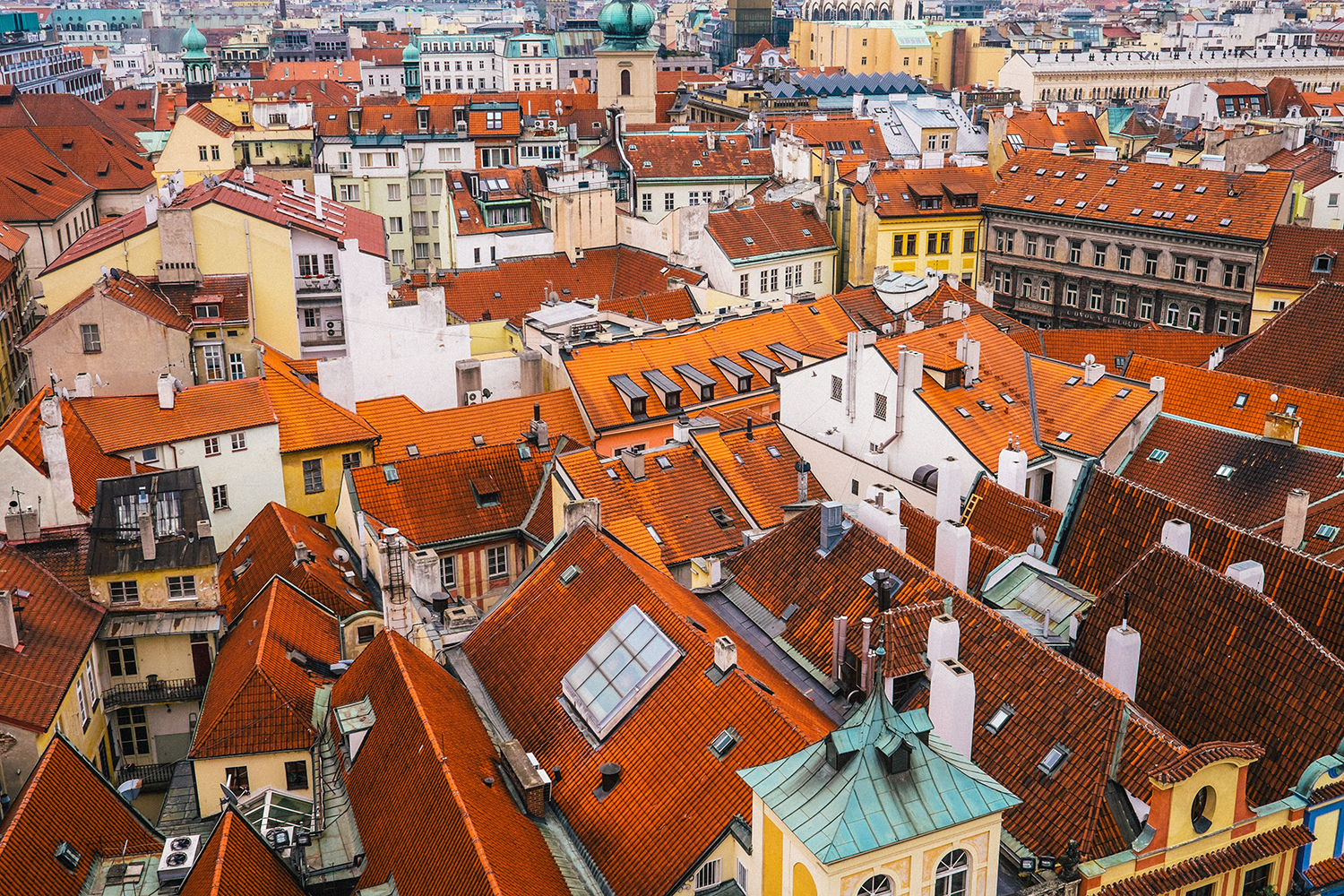
View over Prague’s rooftops (Photo: jay-wennington-1724 via Unsplash)
Centrally located in Prague 3, with its graffiti clad streets and shady looking drinking dens Žižkov has a distinctly ‘bohemian’ flavour and a reputation for being one of the city’s rougher districts. In recent times, however, perceptions of the area have slowly been changing for the better.
Aside from local students many expatriates flock to Žižkov attracted by the inexpensive rent, food and above all else, beer. Unlike the touristic Old Town with its American bars and restaurants, Žižkov retains a keen sense of identity, and may be considered ‘up and coming’ were it not for the fact that it’s already here.
Art & Culture
As young creatives are rarely able to afford a place in an area that has been regenerated, the district’s energetic cultural scene is a real boon. Contemporary art galleries, independent theatres and characterful bars vie for one’s attention, yet all are eclipsed by the unavoidable monolith lying in its centre: Žižkov Television Tower (Mahlerovy sady 1, Prague 3).
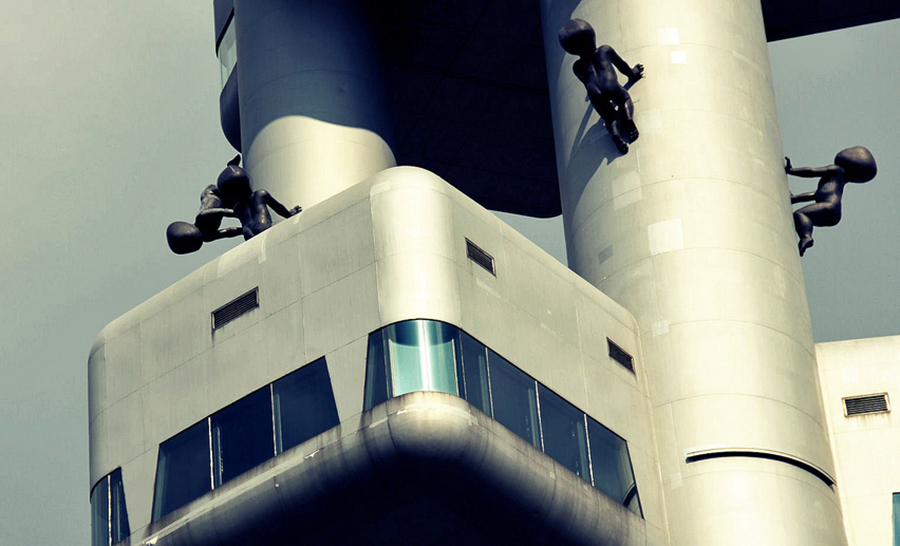
Zizkov TV Tower (Photo: Okurka via Flickr)
Standing at 216 metres in height and offering photogenic views, the tower was built in the late Cold War era to intercept TV transmissions coming from the West. Once voted the second ugliest building in the world, the tower has since been largely accepted by the locals, and this may at least in part be down to the surreal sculptures populating its exterior walls. Created by Czech artist David Černý in 2000, Mimimka takes the disturbing form of ten giant bronze babies crawling up the tower’s sides. Originally intended as a temporary art installation, the sculptures proved so popular that in 2001 it was decided they would become a permanent fixture.
Operating as the nexus for the area’s cultural activity, the multi-purpose arts venue Palac Akropolis (Kubelíkova, Prague 3) showcases a varied weekly programme of events encompassing live music, independent theatre and experimental art. Sell-out bands including the Strokes and Sigur Ros have graced the main stage, whilst on the other end of the sliding guitar scale, local dance theatre company Spitfire have made a modest name for themselves performing at the venue.
Lying close to the border of Prague 8, the Kino Aero (Biskupcova 31, Prague 3) is one of the city’s oldest operational cinemas. Considered by many to be the epicentre for Prague’s film scene, the Kino Aero art-house cinema is a popular sashay ground for the area’s cinephiles screening a mix of new releases and old classics.
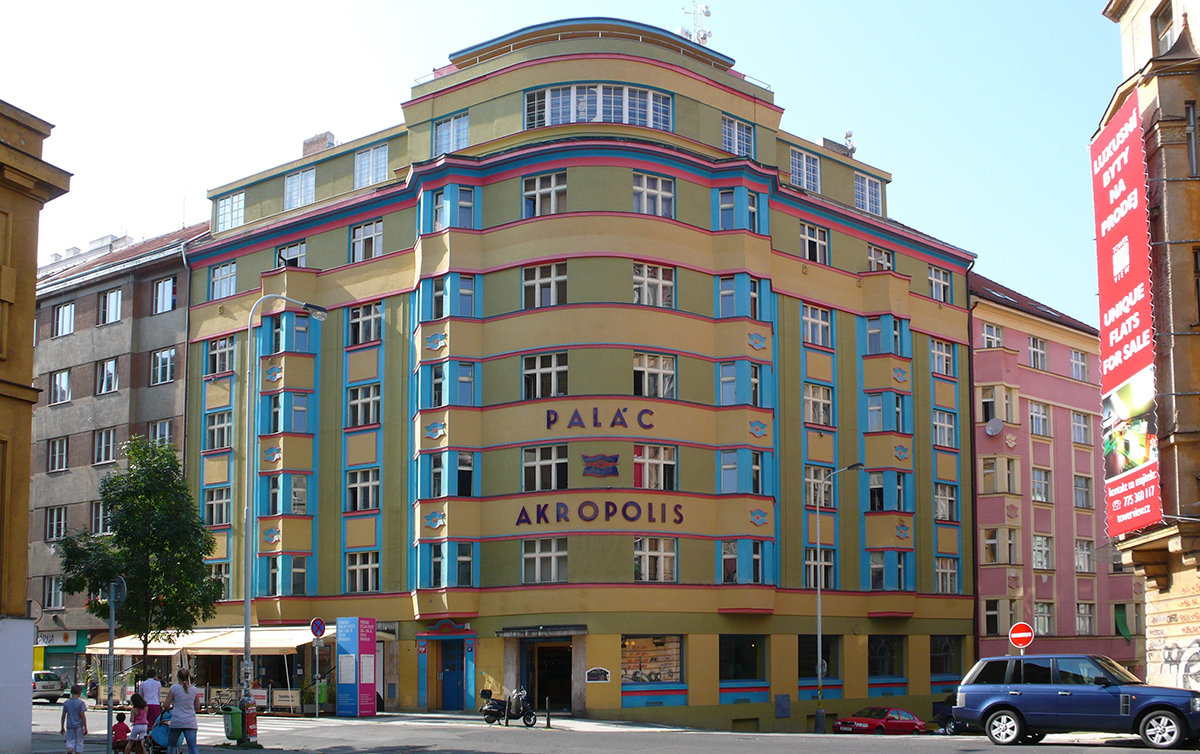
Palac Akropolis (Photo: Jose Mesa via Flickr)
Hotels & Hostels
In the early 20th-century, Žižkov was one of the most densely populated residential areas in the city; a place thousands of factory workers called home. In a similar fashion, low-budget rental spaces and hotels dominate the district’s urban scenery today, yet as the area has benefited from increased investment more up-market hotels have gradually begun to emerge.
One such example of this upturn in quality, the Hotel Theatrino (Bořivojova, Prague 3), is a grandiose, Art Nouveau fondant fancy of a building located in the epicentre of a real hubbub of nightlife. With good connections to the city-centre via tram and the dearth of other viable options with regards to higher end accommodation, the Hotel Theatrino is a sensible choice for visitors blessed with slightly more elasticated budgets.
Onto the mid-range options, and the Golden City Hotel Garni (Táboritská, Prague 3) is a modest three star town-house designed in the Art Nouveau style featuring wall paintings by celebrated European Art Nouveau artists like Alfons Mucha. With buffet breakfast, free WiFi and a nearby tram stop carrying passengers to the city-centre, The Golden City Hotel is an appealing option for those who value relative comfort and convenience but are also willing to skimp on certain luxuries.
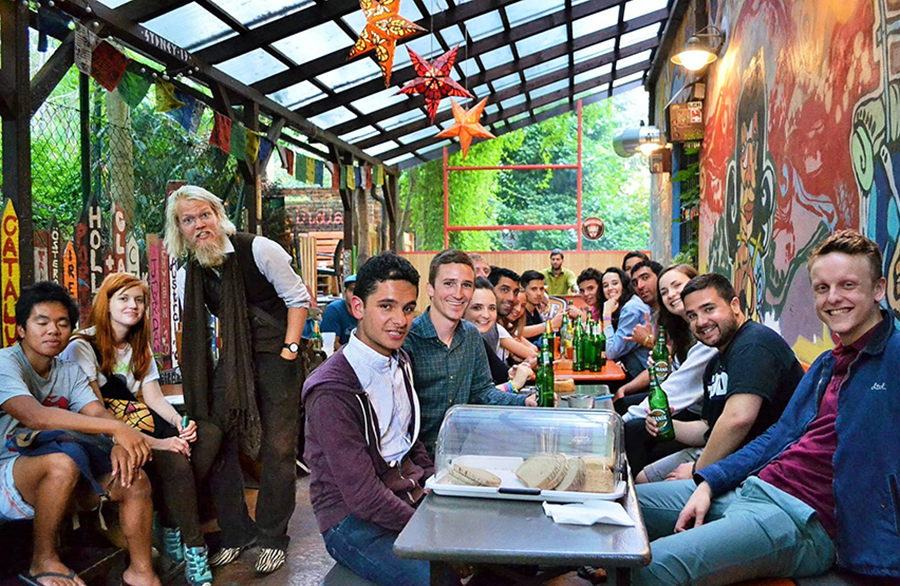
Hostel Elf (Photo: Hostel Elf Prague)
At the lower-budget end of the scale meanwhile happily sits the Hostel Elf (Husitská 11, Prague 3). Advertised as a “backpackers’ hostel” catering to students and individual travellers, this can be taken lightly as private en-suite rooms are also available. With their own terrace and patio area and communal buffet breakfast, a shared experience among visitors is encouraged. Overlooking the park and with views out over the Old Town, Hostel Elf is also a pleasantly and strategically situated base for exploring the city centre.
Bars & Cafés
Hidden away just off of Seifertova, one of the district’s central thoroughfares sits Café Pavlač (Víta Nejedlého 23, Prague 3), a chic café with its own courtyard garden. Sharing floor space with the 35M2 Contemporary Art Gallery, this is a popular meeting place for Prague intellectuals and creatives to while away a couple of hours engaged in deep and meaningful conversation about life and death. Or just to sample their delicious home-made lemonades. Ranging from Cherry Limo, a cherry lemonade with mint, to Mandarin, they serve as ideal palette cleansers to the rich selection of gluten free Coconut-almond and Coffee cakes.
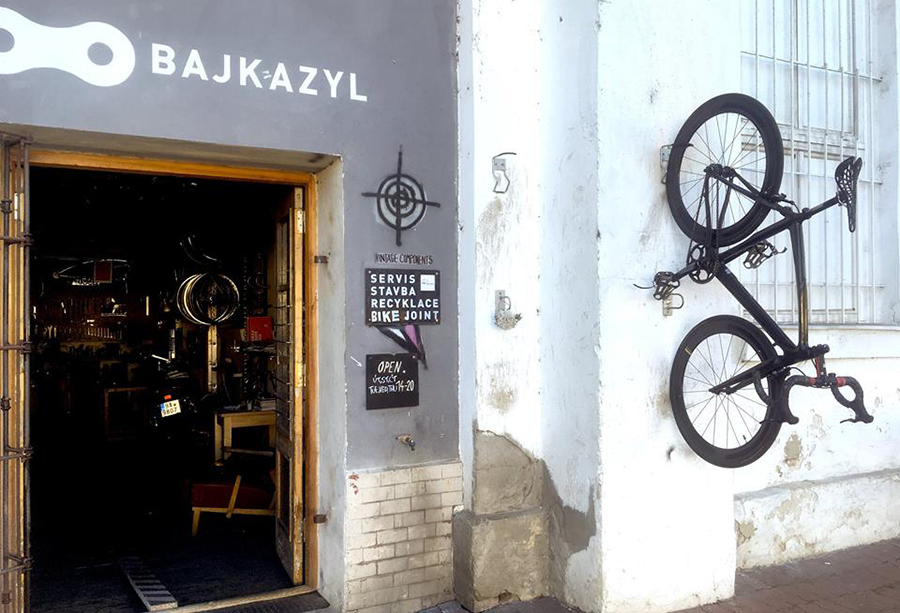
Bajkayzl cafe and bike repair shop (Photo: Bajkkayzl)
The absurd is something that comes naturally to the Czechs, and a case in point would be Bajkazyl (Chlumova 3, Prague 3). Squatting like a hermit under a riverside archway, this little bar offers a bike repair service in addition to the usual full complement of hot and cold beverages. With a steady stream of students and local artists drawn in by its relaxed atmosphere, Bajkazyl is an amusingly anarchic bar that’s worth the mild aggravation of finding it in the first place.
Sitting under a bridge, drink in hand, is an image one could also easily associate with liquor loving wordsmith Charles Bukowski, and unsurprisingly for a city replete with American themed bars, Žižkov is home to Bukowski’s (Bořivojova 86, Prague 3). Less bar and more dark, dingy den, Bukowski’s prepares its patrons for one heady night of hedonism with its intoxicating cocktails and fine cigars. As Bukowski once said, “I think I need a drink. Almost everybody does only they don’t know it.”
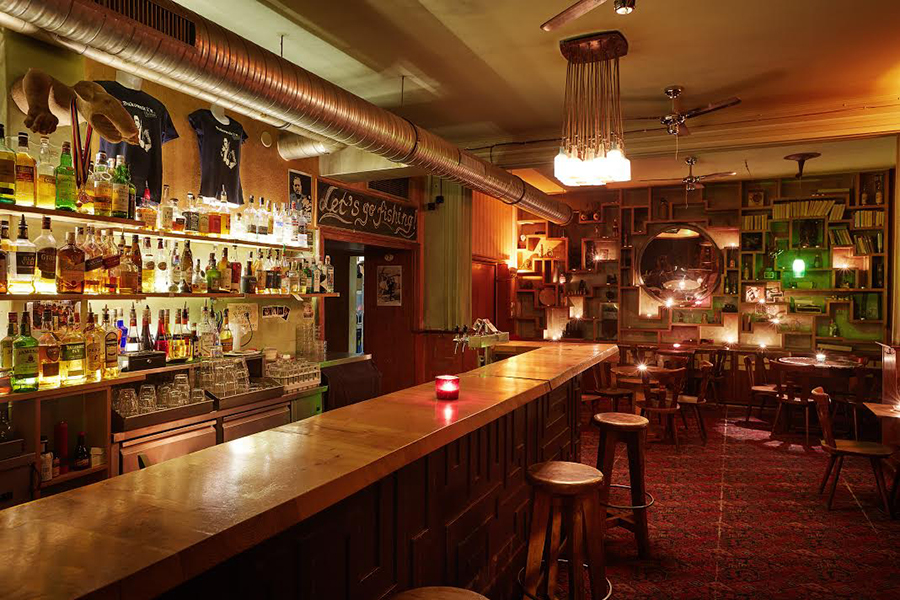
Bukowski’s Bar (Photo: Bukowski’s Bar)
Translated into English as “The Shot-Out Eye,” Vystřeleného Oka (U Božích Bojovníků 3, Prague 3) is a real curio. Above the urinals in the gent’s toilets are vinyl pads designed for resting your head, whilst a large fish tank has been built into the bar area. The selection of beers is limited, with Pilsner being the go-to drink of choice. However, that hardly seems to matter to its patrons, who come here largely for its authentic, if surreal, surroundings.
Churches & Cemeteries
Prague also plays host to innumerable churches representing a variety of different styles and time periods. Built in 1932, The Church of the Most Sacred Heart of Our Lord (Náměstí Jiřího z Poděbrad 19, Prague 3) dates from more recent times than the much frequented Baroque style churches of Prague’s Old Town. Featuring a large transparent clock as its main focal point, the building was designed by Slovenian architect Joze Plecnik, and is not unlike the design of your typical 1930s American government building.
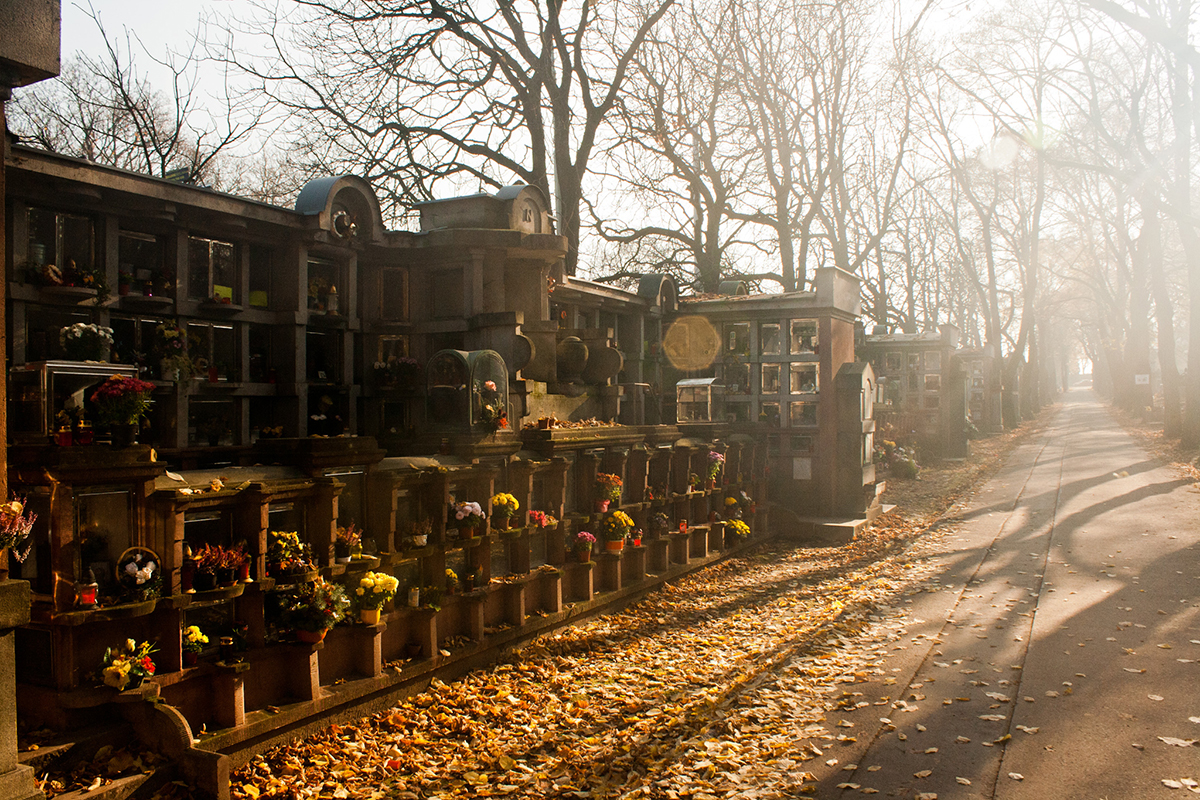
Olsany Cemetery (Photo: Paul Wallace via Flickr)
Vast and sprawling, Olšany cemetery (Vinohradská 153, Prague 3) is the site where many of the city’s former residents through the ages have been laid to rest. Among the thousands of gravestones is one for Jan Palach, the Czech student who torched himself in protest against the Soviet Invasion. Despite the beautiful surroundings, caution must be advised as this is a public cemetery, and a respectable reverence should therefore be maintained when walking its grounds.
Directly across the road from Olšany sits the New Jewish Cemetery (Izraelská 1, Prague 3). Opened in 1890 to replace the Old Jewish Cemetery, by far the biggest draw for visitors today is Franz Kafka’s grave, with the most committed Franz fanboys, or ‘Franz boys’ embarking on an annual pilgrimage on 3rd June to honour the anniversary of his death.
Embodying the district’s truly independent spirit, in 2001 Žižkov declared independence from the Czech Republic, leading some drivers to display a capital ‘Ž’ in the window instead of the usual CZ sticker. Although the move is considered one big joke, it does bring a whole new meaning to the entirely fabricated phrase, “live in Prague, but die in Zizkov.”